Bodybuilding
Barbell Squats – One of the Most Efficient Exercises of All Time
Barbell Squats are a compound exercise that can be performed with weights from the floor or a rack at waist height. The barbell squat is an effective exercise to strengthen the quadriceps and glutes. It also challenges core stability and works the hamstrings.
1) Traditional Barbell Squat
This is often done in the gym and involves holding the barbell across your shoulders and then squatting down.
2) Zercher Squat
This is done by holding the bar at your side, just below your knees. . The barbell is in a "Z" shape, and your feet are together.
3) Safety Squat Bar
This squat keeps your balance by utilizing the safety bars on the squat rack.
Standard Barbell Squat weights include:-65 kg/143lb-70 kg/154lb-75 kg/165lb-80 kg/176lb -85 kg/189lb-90 kg/196lb-95 kg/205lb-100 kg/225lbThe "Zercher squat" is done by holding the barbell at your side, just below your knees.
The barbell is in a "Z" shape, closest to your shoulder. This variation is sometimes called the "safety squat bar." Standard Barbell Squat weights include:-65 kg/143lb-70kg/ 154lb-75 kg/165lb-80 kg/176lb -85 kg/189lb-90 kg/196 lb-95.
Doing Barbell Squats Properly
The barbell squat is performed by holding a barbell on the shoulders in front of the body, standing straight with feet shoulder-width apart and toes pointed outwards slightly. It is essential to keep a natural arch in the back and not let it round out, as this can cause injury to lower back muscles.
With the barbell on the shoulders, the arms are placed along the torso's sides, with elbows pointing toward each other. This is necessary to maintain balance and proper form. The knees should never extend beyond the toes during this movement. The squat can be done with a "sumo" stance by positioning feet wider than shoulder-width apart under hips or with a "normal" perspective by placing feet shoulder-width apart under hips.
Barbell Squats and the Sumo Stance Technique
The sumo stance is most prevalent in Olympic weightlifting, while the standard view is most prevalent in powerlifting. The squat is a compound exercise involving movement at the hip and knee joints.
It tests strength and rates of force development. It also opens up the hips and quadriceps and requires balance to maintain good form. In a squat, the barbell is held on the back of the neck, with elbows at shoulder height and thumbs facing backward. During squatting, weight is supported by the anterior deltoids and trapezius muscles.
Parallel Squat Barbell Technique
The parallel squat is typically performed with an Olympic bar—Bell across the upper back, shoulder width, or slightly narrower. A critical difference between a powerlifting squat and a parallel squat is that in the powerlifting squat, the torso is upright (straight up and down) during movement.
This helps support more weight on the back muscles. In contrast, in a parallel squat, typically done with an Olympic barbell across the upper back and shoulders, the torso tilts forward (forward tilt posture) during movement to help balance the weight on the front and back muscles.
The difference in the torso position you mention is almost irrelevant. During movement, the part of the torso determines what type of squat you're doing, not whether it's a powerlifting or a parallel squat.
Sticking to Other Aspects of Training
It is said that bodybuilding is a sport of variables, where the possibilities are endless: it's about training and nutrition. It is normal to be, whereas each body is different, and to achieve optimal results, firstly, you should discover what fits best for each body.
However, there are some basic principles that every bodybuilder has to be aware of: balance, harmony, beauty, food quality training to stimulate muscle growth, and plenty of rest.
Must Read: Principles To Consider When Selecting Exercises For Your Workout
In terms of training, one of the basic principles in bodybuilding is to avoid routine, periodically changing its approach, the exercises, and using weights, the number of sets, and repetitions. Maybe it happens to you more than once to want to introduce an activity in your training in the hope that it will stimulate muscle growth, but either because of technical limitations of the room where you train or from ignorance, you leave the idea.
So, it's time to find out that experienced bodybuilders practice many exercises. Over time, they have built tons of muscle, but now are less and less used, not necessarily because they would be unproductive.
Improvise Your Training Tactics
Bodybuilding is where you are free to improvise and make an unusual combination. But intelligent people learn from other mistakes. Be wise enough to " steal" the secrets from those who achieve excellent muscle-building results, and you will save time and increase your muscle quickly.
We want to bring to your attention one of these crucial exercises, which represents an alternative to the existing routine in your workout. Barbell squats are one of the best exercises for developing and separating the hamstrings and lower back muscles (lower back and spinal muscles). Also, when made lightweight, it is an effective option for heating the hamstrings and lowering the back for executing complex exercises such as squats.
Performing this exercise is not difficult and does not involve using specialized equipment. It would be best if you did it this way: from standing up in a position with feet apart, no more than shoulder width, take from the support the barbell, grab it with a more prominent outlet than shoulder width and place it on the neck.
More Barbell Squats Techniques
Bend your knees slightly for balance, breathing deeply, and slowly lower it towards the face, bending the wrist balance until you get back parallel to the ground. Back into position and, as you lift, exhale. During the lift, keep your head high and avoid going down the trunk below the horizon; to avoid being put in a situation you can not hold back.
Professional or more advanced bodybuilders, for which maintaining the balance beam on their neck is not a problem and wrist flexibility balance is good, can perform the exercise with their knees straight.
The most required muscles during this exercise are the hamstrings and buttocks muscles. Do not try to lift the weight using the lower back and spinal muscles. It would be best if you always tried to keep the isometric contracted throughout the movement.
Research Before Starting Barbell Squats
If you have never done this type of exercise before, it is better to give yourself a period to learn its proper execution.
Also, remember to avoid using heavy weights at the beginning since you risk a severe back injury.
Overall
This being said, if you are tired of your exercises or have no idea what training is best to do for involving most of your muscles, then know that barbell squats are considered one of the most efficient exercises practiced by all bodybuilders along the time. Execute it the right way, as described above, and you will increase your muscles quickly.
Bodybuilding
Mastering Bodybuilding in 2025: Top Fitness Tips for Success

Bodybuilding is more than just a sport; it's a lifestyle that requires dedication, discipline, and a thorough understanding of fitness principles. As the world of fitness continues to evolve, bodybuilders must stay updated with the latest trends, techniques, and scientific advancements to achieve their goals. In 2025, several innovative approaches are redefining bodybuilding. Here are essential fitness tips for bodybuilders to excel this year.
Read More: Bodybuilder Winter Clothing: Staying Warm and Stylish
Embrace Technology-Driven Workouts
In 2025, technology plays a significant role in bodybuilding. Wearable devices, fitness apps, and virtual reality (VR) training are now integral components of an effective workout regimen.
Wearable Devices
Modern wearables track everything from heart rate and sleep patterns to muscle activation and caloric expenditure. Utilize these devices to monitor your progress and make data-driven adjustments to your training and nutrition plans.
Fitness Apps
Leverage fitness apps for customized workout plans, progress tracking, and virtual coaching. Many apps now incorporate artificial intelligence to provide personalized feedback and recommendations.
Virtual Reality Training
VR technology offers immersive workout experiences, allowing bodybuilders to simulate different training environments and scenarios. This can enhance motivation and add variety to your routine.
Focus on Functional Strength
While hypertrophy (muscle growth) remains a primary goal, functional strength is gaining importance. Functional strength training improves overall performance, reduces the risk of injury, and enhances daily activities.
 Check Out Our1 4 Weeks Quality Strength & Lean Muscles
Check Out Our1 4 Weeks Quality Strength & Lean Muscles
Compound Movements
Incorporate compound exercises like squats, deadlifts, and bench presses. These movements engage multiple muscle groups and joints, promoting balanced strength development.
Core Stability
Prioritize exercises that strengthen the core, such as planks, Russian twists, and leg raises. A strong core supports better lifting mechanics and reduces the risk of lower back injuries.
Optimize Nutrition for Muscle Growth and Recovery
Nutrition is the cornerstone of successful bodybuilding. In 2025, the focus is on personalized nutrition plans tailored to individual needs and goals.
Protein Intake
Ensure adequate protein intake to support muscle repair and growth. Aim for 1.6 to 2.2 grams of protein per kilogram of body weight per day, depending on your training intensity and goals.
 Click Here to Buy SynthaTrope By SynthaPharma
Click Here to Buy SynthaTrope By SynthaPharma
Nutrient Timing
Pay attention to nutrient timing to maximize muscle recovery and growth. Consume protein and carbohydrates within 30 minutes post-workout to replenish glycogen stores and kickstart muscle repair.
Supplements
Utilize supplements wisely. Creatine, branched-chain amino acids (BCAAs), and omega-3 fatty acids are popular choices for enhancing performance and recovery.
Prioritize Mental Health and Mindfulness
Mental health is increasingly recognized as a critical component of overall fitness. Incorporating mindfulness practices can improve focus, reduce stress, and enhance performance.
Meditation
Incorporate meditation into your daily routine to reduce stress and improve mental clarity. Mindfulness meditation can enhance your mind-muscle connection during workouts.
Visualization
Use visualization techniques to mentally rehearse your workouts. Visualizing successful lifts and achieving your goals can boost confidence and motivation.
Rest and Recovery
Prioritize rest and recovery to prevent burnout and overtraining. Ensure you get 7-9 hours of sleep per night and incorporate rest days into your training schedule.
Leverage Advanced Training Techniques
Advanced training techniques can help break through plateaus and stimulate muscle growth. In 2025, several methods are gaining popularity among bodybuilders.
Blood Flow Restriction (BFR) Training: BFR involves restricting blood flow to the muscles during low-intensity exercises. This technique can enhance muscle growth and strength without the need for heavy weights.
Eccentric Training: Focus on the eccentric (lowering) phase of exercises. Eccentric training can stimulate greater muscle damage and growth compared to traditional concentric movements.
Periodization: Implement periodization into your training plan. Varying the intensity, volume, and type of exercises can prevent plateaus and ensure continuous progress.
Incorporate Recovery and Mobility Work
Recovery and mobility are essential for preventing injuries and maintaining optimal performance. In 2025, bodybuilders are paying more attention to these aspects of training.
Foam Rolling and Myofascial Release: Use foam rollers and massage balls to release muscle tightness and improve flexibility. Regular myofascial release can reduce soreness and enhance recovery.
Stretching: Incorporate dynamic stretching before workouts and static stretching after workouts. Stretching improves range of motion and prevents muscle imbalances.
Cryotherapy and Hydrotherapy: Explore recovery techniques like cryotherapy (cold therapy) and hydrotherapy (water therapy) to reduce inflammation and accelerate muscle recovery.
Engage in Continuous Learning and Community Building
The fitness industry is constantly evolving, and staying informed is crucial for success. Engage in continuous learning and connect with the bodybuilding community for support and motivation.
Educational Resources: Read books, watch videos, and attend seminars to stay updated on the latest research and trends in bodybuilding.
Community Engagement: Join online forums, social media groups, and local bodybuilding clubs. Sharing experiences and knowledge with fellow bodybuilders can provide valuable insights and encouragement.
Professional Guidance: Consider working with a certified personal trainer or coach. Professional guidance can help you optimize your training and nutrition plans, ensuring you're on the right track.
With your FB Plus subscription or active FB Plus Pass, you now have access to 124 weeks of our most popular workout programs, which typically sell for $10-$30 each. Additionally, our popular 4-week Meal Plan is included. This is on top of the 38 Challenges and Programs that are already available to Plus members.
We've also introduced a new feature that many of you have requested. To assist you in choosing your next program, you can now preview each day of any program from its detail view. This feature lets you see all the included workout videos and content before you schedule it, ensuring you know exactly what to expect.
Conclusion
In 2025, bodybuilding is more than just lifting weights; it's a holistic approach to fitness that encompasses technology, nutrition, mental health, and advanced training techniques. By embracing these fitness tips, bodybuilders can achieve their goals, stay injury-free, and enjoy a fulfilling fitness journey. Remember, consistency and dedication are key to success in bodybuilding. Stay committed, keep learning, and most importantly, have fun on your path to becoming the best version of yourself.
Bodybuilding
Top Video Games for Bodybuilders in 2025

There are several video games that can be great for bodybuilders, combining fitness and fun! Here are some of the best options:
Ring Fit Adventure (Nintendo Switch)
The game uses the Ring-Con and Leg Strap to guide you through various exercises and adventures. It's a fun way to get a full-body workout while playing a game.
Fitness Boxing 2: VR Boxing Remastered (PlayStation VR)
It offers a full-body boxing workout with a variety of punches and combos. It's a great way to improve your fitness while enjoying a virtual boxing experience.
Must Read: Marvel-Inspired Training Clothing on Amazon
Just Dance 2024
This popular dance game gets you moving to the beat with a variety of songs and dance routines. It's a fun way to burn calories and improve your coordination.
Zumba Fitness
Burn It Off (Nintendo Wii): This game offers a fun and energetic Zumba workout, perfect for those who enjoy dancing and want to get a good cardio workout.
Yoga for Beginners
If you're looking for a more relaxing workout, yoga games can help improve flexibility and reduce stress. Many of these games offer guided yoga sessions that you can follow along with.
Gym Tycoon
This game lets you build and manage your own gym, complete with various workout equipment and fitness classes. It's a great way to learn about different exercises and how to create effective workout routines.
The Sims 4: Fitness Stuff Pack
This expansion pack for The Sims 4 adds fitness equipment and activities to the game, allowing you to improve your character's fitness and join the athlete career.
Grand Theft Auto: San Andreas
While not a traditional fitness game, this classic game includes bodybuilding activities that can help your character gain muscle and improve fitness.
Knockout Home Fitness (Nintendo Switch)
This game offers a variety of boxing workouts that can help improve your strength and endurance.
Gym Simulator 24 (PC)
In this simulation game, you can build and manage your own fitness empire, creating workout routines and managing gym equipment.
Let's Get Fit (Nintendo Switch)
This game focuses on pure workouts, allowing you to set programs and follow along with digital trainers for a customized fitness experience.
Beat Saber (VR)
A popular VR game where you slash blocks to the beat of the music, providing an intense full-body workout.
Synth Riders (PlayStation VR)
This game combines freestyle dance and fitness, offering high-tempo tracks and multiplayer modes for a fun and energetic workout.
Yoga Master (PlayStation)
Designed by professional yoga coaches, this game offers a variety of yoga lessons and poses to improve flexibility and reduce stress.
Les Mills Bodycombat (PlayStation VR)
A martial arts-inspired workout game with a range of workout plans and coaching to keep you motivated.
OhShape Ultimate (PlayStation VR)
This game provides a full-body cardio workout with six sessions and two difficulty levels, designed to engage every part of your body.
These games offer a mix of cardio, strength, and flexibility workouts, making them great additions to your fitness routine.
Related Article: Supplemental Breast Milk for Bodybuilders
Bodybuilding
2nd Edition of Natural Bodybuilding Competition Facts
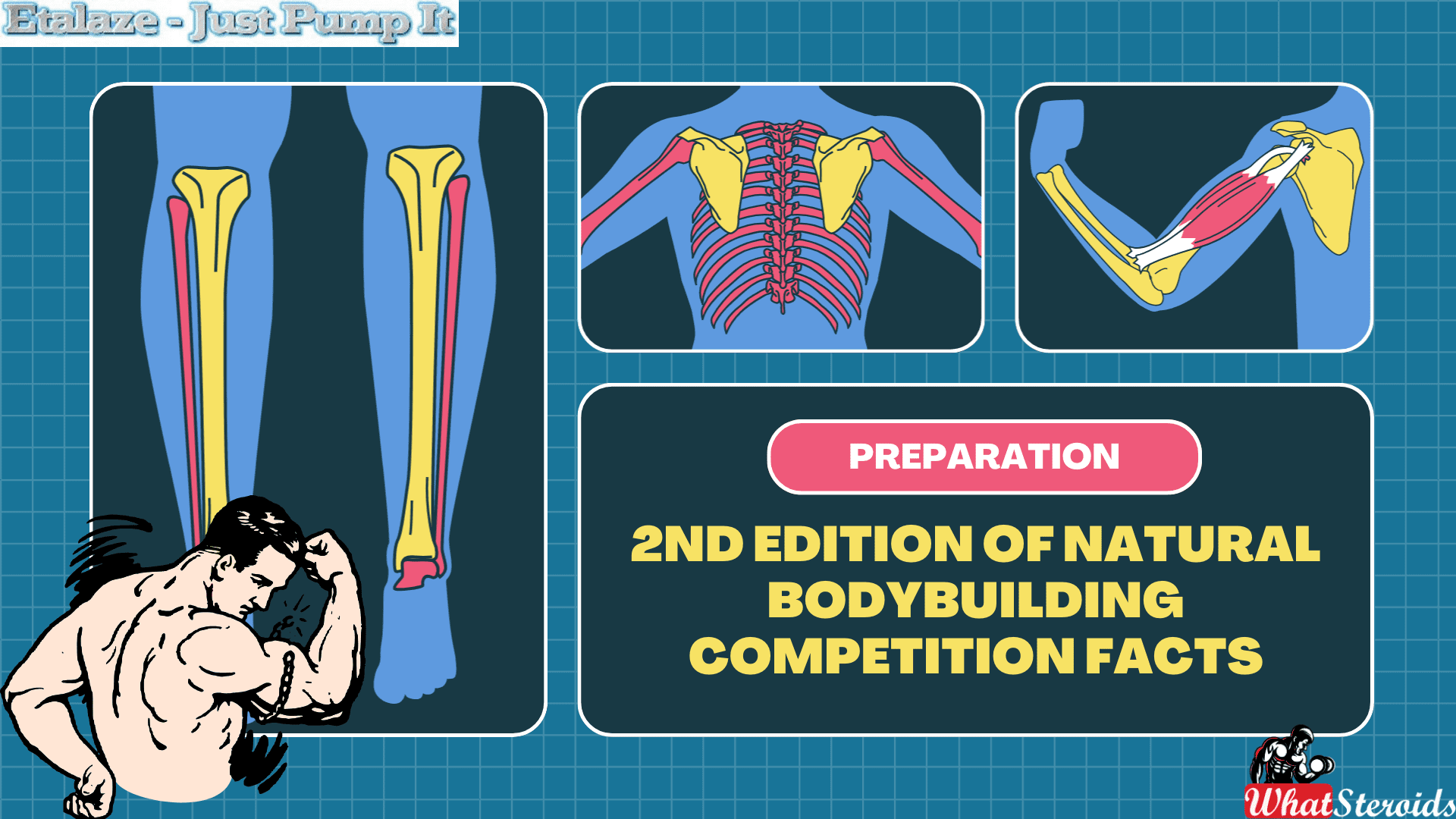
Natural bodybuilding competitions are designed to promote and celebrate athletes who build their physiques without the use of performance-enhancing drugs. These events emphasize fair play, health, and the natural development of muscle mass and definition.
The second edition of natural bodybuilding competitions has gained momentum globally, particularly focusing on drug-free athletes. These competitions are hosted by various organizations like the INBA/PNBA (International Natural Bodybuilding Association/Professional Natural Bodybuilding Association) and OCB (Organization of Competitive Bodybuilders).
In 2024, several notable events have been planned, including the INBA Natural Universe and INBA World Cup, both of which emphasize natural bodybuilding through rigorous drug testing policies. These events aim to showcase competitors who adhere to strict drug-free protocols, and winners often earn pro cards allowing them to compete in higher-level professional competitions.
These competitions focus on categories like men's bodybuilding, classic physique, and women's figure and bikini, among others. Athletes undergo polygraph and urine tests to ensure compliance with natural bodybuilding standards. The winners often receive medals, trophies, or pro status
-

 Steroids2 years ago
Steroids2 years agoVOX Testing: Why Bodybuilders Must Have It Tested Regularly
-

 Steroids2 years ago
Steroids2 years agoShavers and Other Body Grooming Equipment for Bodybuilders In 2023
-

 Steroids2 years ago
Steroids2 years agoChatGPT and Other Avenues to Find Great Bodybuilding Coaches
-

 Steroids2 years ago
Steroids2 years agoBest Oil Recommendations Before Competition for Subtle Shimmer
-

 Steroids2 years ago
Steroids2 years agoPowerlifting Vs Power Building: Find Out the Big Difference and When to Shift Between the Two
-

 Nutrition1 year ago
Nutrition1 year agoEverything Nutritional Food: What’s Too Much Or Too Little
-

 Bodybuilding Products1 year ago
Bodybuilding Products1 year agoTelmisartan In Bodybuilding: An Expert’s Advice
-

 Anabolic Steroids1 year ago
Anabolic Steroids1 year agoLegality of Anabolic Steroids In Latin America
-

 Beginners2 years ago
Beginners2 years agoTren Cycle for Beginners
-

 Bodybuilding1 year ago
Bodybuilding1 year agoList of FDA-Approved Peptides
-

 Bodybuilding2 years ago
Bodybuilding2 years agoCompetition Prep Cycle for Pro Bodybuilders
-

 Bodybuilding1 year ago
Bodybuilding1 year agoChia Seeds in A Bodybuilder’s Diet: An Expert’s Advice
-

 Bodybuilding7 months ago
Bodybuilding7 months agoPrimal Movements: Our Ultimate Guide for Maximum Results
-

 Steroids11 months ago
Steroids11 months agoAnadrol Cycle: Benefits, Doses, Alternatives, etc.
-

 Anabolic Steroids11 months ago
Anabolic Steroids11 months agoHow Much Do You Know About B-AET? A Fat Burner You’ve Been Missing
-

 Anabolic Steroids8 months ago
Anabolic Steroids8 months agoJoint Stiffness: How to Manage It While on AAS
-

 Steroids9 months ago
Steroids9 months agoOmnitope (Oxytocin)
-

 Bodybuilding1 year ago
Bodybuilding1 year agoHow Much Is Too Much Cardio? Understanding Heart Rate Zones
-

 Product Reviews11 months ago
Product Reviews11 months agoTop Vitamins for Skin Health
-

 Bodybuilding8 months ago
Bodybuilding8 months agoHow Effective is Bone Broth for Recovery?
-

 Steroids8 months ago
Steroids8 months agoSleeping Positions for Effective Muscle Recovery
-

 Steroids10 months ago
Steroids10 months agoMajor Bodybuilding Peptides Explained
-

 Bodybuilding9 months ago
Bodybuilding9 months agoHormone Replacement Therapy (TRT) Cycle Guide
-

 Bodybuilding1 year ago
Bodybuilding1 year agoCalorie Dumping: A Bodybuilder’s Guide
-

 Anabolic Steroids1 year ago
Anabolic Steroids1 year agoStart The New Year Strong With These Tips








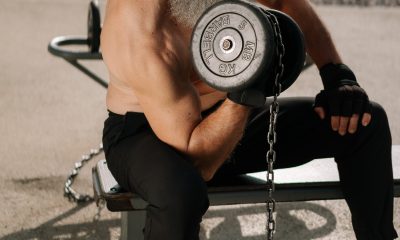





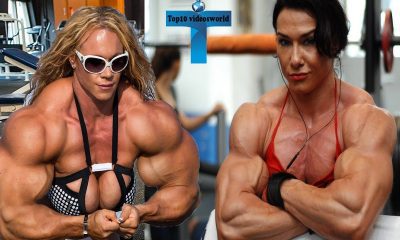

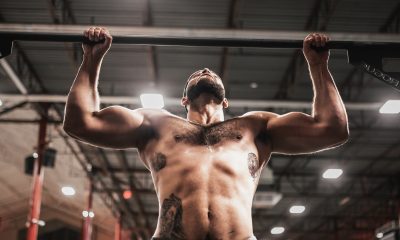




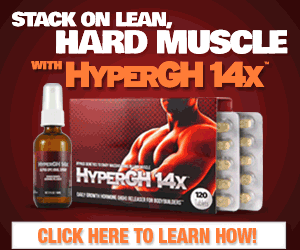
 Click here to buy 1-Test Cyp/DHB 100 by Dragon Pharma
Click here to buy 1-Test Cyp/DHB 100 by Dragon Pharma









